Step 1: Anticipation
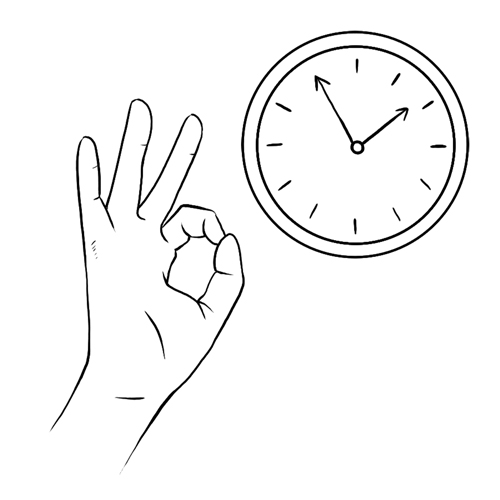
|
See the full description here
Summary:
Collaborate and form a team with your child. When you invest the time to form a strong team, children feel more comfortable and less anxious – this will help you complete the care with less stress – for you and your child.
Use these tips, from the start, to set the stage for a positive care procedure:
- Create the right moment: integrate the care in a routine.
- Alert your child to the needed care and communicate together.
- Form a team with your child: Encourage autonomy by offering realistic choices such as the method of distraction. Stay tuned to your child. Manage pain and anxiety, using distraction and positioning for comfort.
|
|
Step 2: Preparation
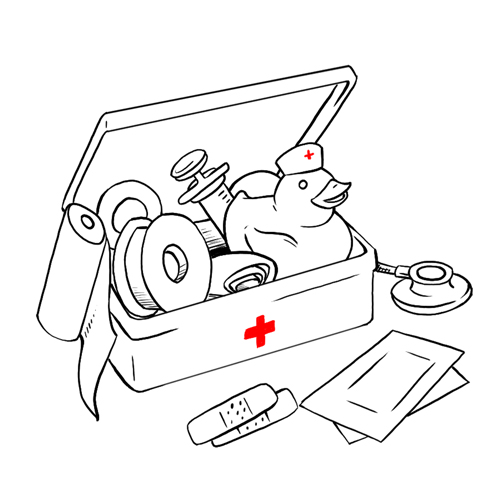
|
See the full description here
Summary:
- Prepare the environment: Identify a routine place for care. Close windows, doors and fans. Wash and dry the work surface and gather the needed materials for the care and to distract your child.
- Prepare your child: Get help if needed. Position your child for comfort to receive the care and start to use the selected distraction method.
- Prepare yourself: Find the right time when you are ready to provide the care safely. Review the list of care steps. Wash your hands.
Now that you are ready to start the care procedure, take the opportunity to encourage and praise your child.
|
|
Step 3: Procedure

|
See the full description here
Summary 3 key concepts:
- Safety: Carefully follow the care practice steps as you have been taught.
- Flexibility: Be ready to adjust according to your child’s reactions during the procedure. As needed, reposition or select an alternative distraction strategy. Follow your child’s pace and rhythm.
- Collaboration: Reassure your child, verbally and non-verbally. Acknowledge your child’s emotions and reactions. Help your child differentiate between the different sensations during a procedure.
|
|
Step 4: Prepare the device

|
- Connect the device to an electrical wall outlet or an external battery. The built-in battery may also be used.
- Make sure that the antibacterial filter is connected to the air outlet of the respirator.
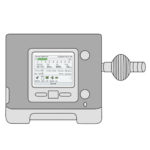
Why ? This step ensures the proper set-up for the ventilatory assistance device, in preparation for the next steps.
|
|
Step 5: Assemble the ventilation circuit

|
- Connect all parts of the ventilation circuit: tracheostomy adapter, dead space, heated humidifier or artificial nose, adapter, exhalation valve and tubing.
- Make sure that the circuit parts are well connected to each other.
- Verify that the tubing of the circuit is not bent, pinched or obstructed.
Why ? A correct assembly of the circuit parts avoids air leaks during ventilatory assistance.
Air leaks can reduce the effectiveness of ventilatory assistance.
Correct positioning of tubing helps to prevent the accumulation of water inside the tubing.
|
|
Step 6: Prepare the heated humidifier, if being used
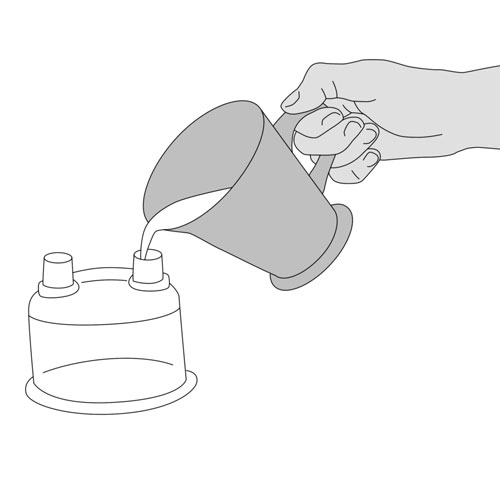
|
If your child uses an artificial nose, then go to the next step.
- Remove the water chamber from the humidifier.
- Empty any residual water from previous use, if any.
- Place the water chamber on a solid flat surface (eg, table top).
- Fill water chamber with distilled or demineralized water to the maximal fill line.
- Put the water chamber back into the humidifier.
- Using the short tubing, connect one end of the tubing to the antibacterial filter of the respirator and the other end to one of the openings on top of the water chamber of the heated humidifier.

- Using the ventilation circuit tubing that goes towards the child, connect the circuit tubing to the other opening on the top of the water chamber of the heated humidifier.
- Turn the humidifier on by pressing the power button.
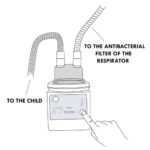
- Make sure that the humidity level on the humidifier is correctly set, according to the recommendations of the healthcare team.
- Go to step 8.
Why ? The addition of humidity to the air flow from the device helps to prevent irritation and overdrying of the lining of the airways.
|
|
Step 7: Prepare the artificial nose, if being used
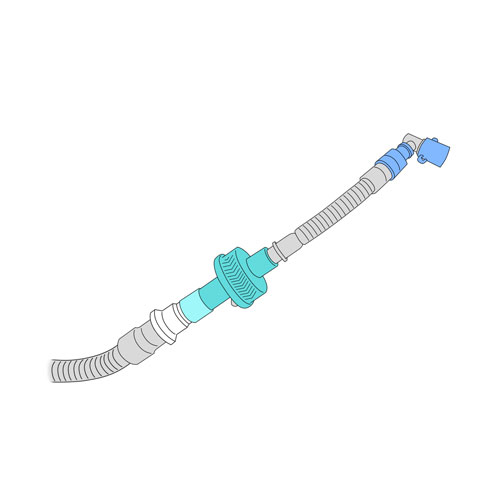
|
If your child is not using an artificial nose, then go to the next step.
- Connect the artificial nose between the dead space and the adapter of the ventilation circuit.
- Connect the tubing of the circuit to the antibacterial filter of the respirator.
Why ? The addition of humidity to the air flow from the device helps to prevent irritation and overdrying of the lining of the airways.
|
|
Step 8: Position and prepare your child
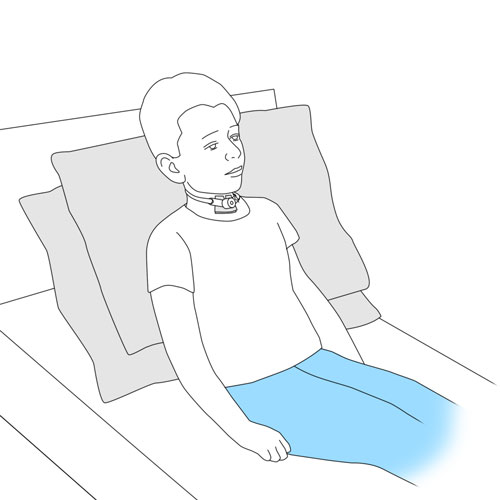
|
- Place your child in a comfortable position (sitting or lying down) that easily allows you to access the tracheal cannula.
- Remove the speaking valve or the artificial nose if one is in place over the tracheal cannula.
- Suction the secretions if needed.
Why ? The best position is one which optimizes your child’s comfort and the effectiveness of ventilatory assistance.
|
|
Step 9: Inflate the cuffed tracheal cannula, if present
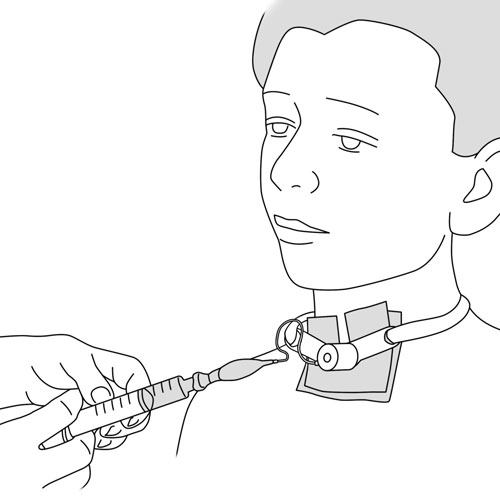
|
If your child has a tracheal cannula without a cuff, then go to the next step.
- Fill the syringe with the amount of air specified by your healthcare team.
- Insert the tip of the syringe into the valve of the pilot balloon of the tracheal cannula, screwing it to connect securely.
- Slowly push the air into the cuff, 0.5 ml at a time.
- Once the cuff is inflated, detach the syringe by unscrewing it.
Why ? If your child uses a cuffed tracheal cannula, then this step helps to reduce air leaks and improves the effectiveness of ventilatory assistance.
|
|
Step 10: Turn on the device
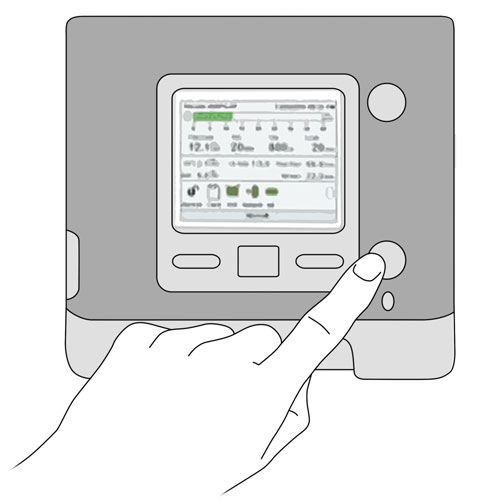
|
- Press and release the start button of the ventilatory assistance device.
- The backlight of the display should light up; red and yellow lights flash on briefly and a beeping sound is heard when the device is turned on.
Why ? The device must be turned on in order to provide ventilatory assistance to your child.
Always start the device BEFORE connecting the device to your child. This ensures that your child is not exposed to a possible rapid burst of air flow when the device is first started.
|
|
Step 11: Connect the circuit to the tracheal cannula
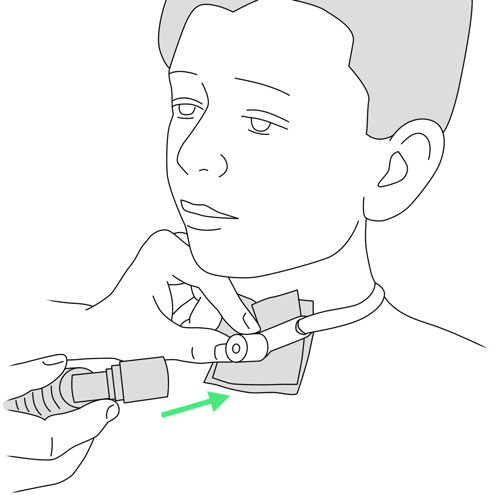
|
- Hold the tracheostomy connector with one hand to stabilize it.
- With the other hand, connect the tracheostomy adapter portion of the ventilation circuit to the tracheostomy connector.
- Turn on the oxygen supply, if prescribed, according to the methods taught by your child’s healthcare team.
- If present, ensure that the exhalation valve is not blocked.
Why ? This step connects the ventilation circuit and the ventilatory assistance device to your child.
Correct connection of the tracheostomy adapter of the circuit to the tracheostomy connector of your child helps to avoid air leaks during ventilatory assistance.
The exhalation valve allows release of exhaled air.
|
|
Step 12: Continue and supervise ventilatory assistance
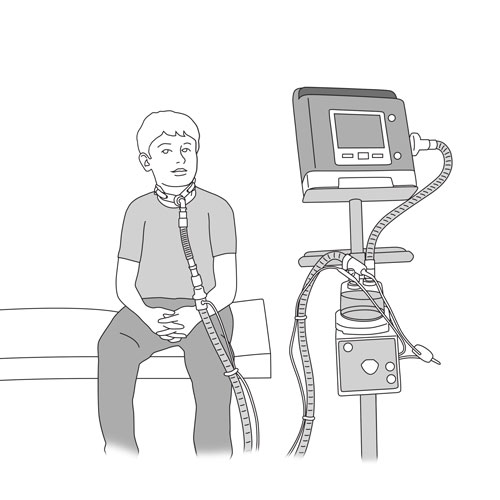
|
- Check that the device is working properly: your child should be receiving air flow and the pressure graph (green bar) on the device screen should be moving back and forth.
- Make sure that there are no significant air leaks in the circuit: check the level of leaks displayed on the device screen and compare this to the acceptable levels as indicated by your child’s healthcare team. If there is an excessive air leak, correct the problem.
- Make sure that there is no tension or pulling on the ventilation circuit and on the tracheal cannula connector.
- Ensure that the humidifier is on and functioning correctly (eg, temperature displayed, lights on).
- Verify that there is no accumulation of water in the tubing.
- Correct any device alarm situations, if any.
- Contact your healthcare team for any persistent alarms.
Why ? This step ensures safe ventilatory assistance.
Air leaks may reduce the effectiveness of ventilatory assistance.
|
|
Step 13: Discontinue ventilation and disconnect the circuit from the tracheal cannula

|
When the period of ventilatory assistance for the child is over:
- Hold the tracheostomy connector with one hand to stabilize it.
- With the other hand, disconnect the tracheostomy adapter portion of the ventilation circuit from the tracheostomy connector.
Why ? This step allows the ventilatory assistance to be discontinued safely.
|
|
Step 14: Turn off the device

|
- Turn off the oxygen supply, if used.
- Press and release the device stop button.
- Confirm your intention to turn off the device by pressing the button at the bottom right of the screen.
- Turn off the humidifier by pressing on the stop button of the humidifier.
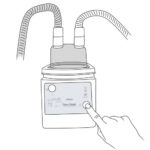
Why ? This step allows the device to be turned off securely.
|
|
Step 15: Deflate the cuffed tracheal cannula, if present

|
If your child has a tracheal cannula without a cuff, then go to the next step.
- Before deflating the cuff, suction the secretions.
- Holding the syringe, push the plunger all the way in to remove any air.
- Insert the tip of the syringe into the valve of the pilot balloon of the tracheal cannula, screwing it to connect securely.
- Pull the plunger out slowly until you feel resistance.
- Verify that you have removed the volume of air that was injected into the cuff in step 9.
- Once the cuff is deflated, detach the syringe by unscrewing it.
Why ? Deflating the cuff allows the passage of air into the lungs via the nose and mouth, in addition to the tracheal cannula.
Aspirating the secretions before deflating the cuff prevents any accumulated secretions from going into the lungs.
|
|
Step 16: Replace the speaking valve or the artificial nose, if needed
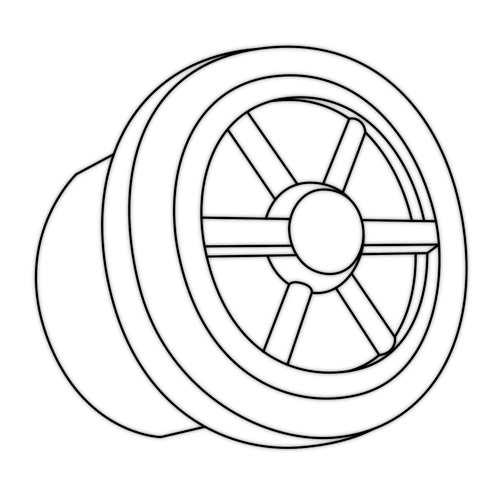
|
- Suction the secretions, if needed.
- Replace the speaking valve or the artificial nose on the tracheal cannula, if needed.
Always ensure that the cuff of the tracheal cannula is deflated before putting the speaking valve in place.
Why ? This step allows you to reinstall the accessories necessary for your child’s breathing, if required.
|
|
Step 17: Clean and store the equipment

|
Clean and store the equipment according to the recommendations.
Why ? This step is required to prevent infections and to maintain the equipment in working order.
|
|
Step 18: Recovery

|
See the full description here
Summary:
The treatment is finished. Wash your hands again.
Be prepared to recognize the challenges faced and to provide positive feedback. Help your child recognize his/her strengths. Acknowledge the collaborative teamwork.
- Listen to what your child says about the parts of the procedure that were difficult or painful.
- Comfort your child and recognize your child’s collaboration with positive feedback.
- Highlight your child’s specific strengths that helped make the procedure positive.
- Discuss with your child what might be done the same or differently the next time the care is needed.
- Keep your promises if you have promised a reward, follow through.
- Reward yourself too.
|
|
![]()